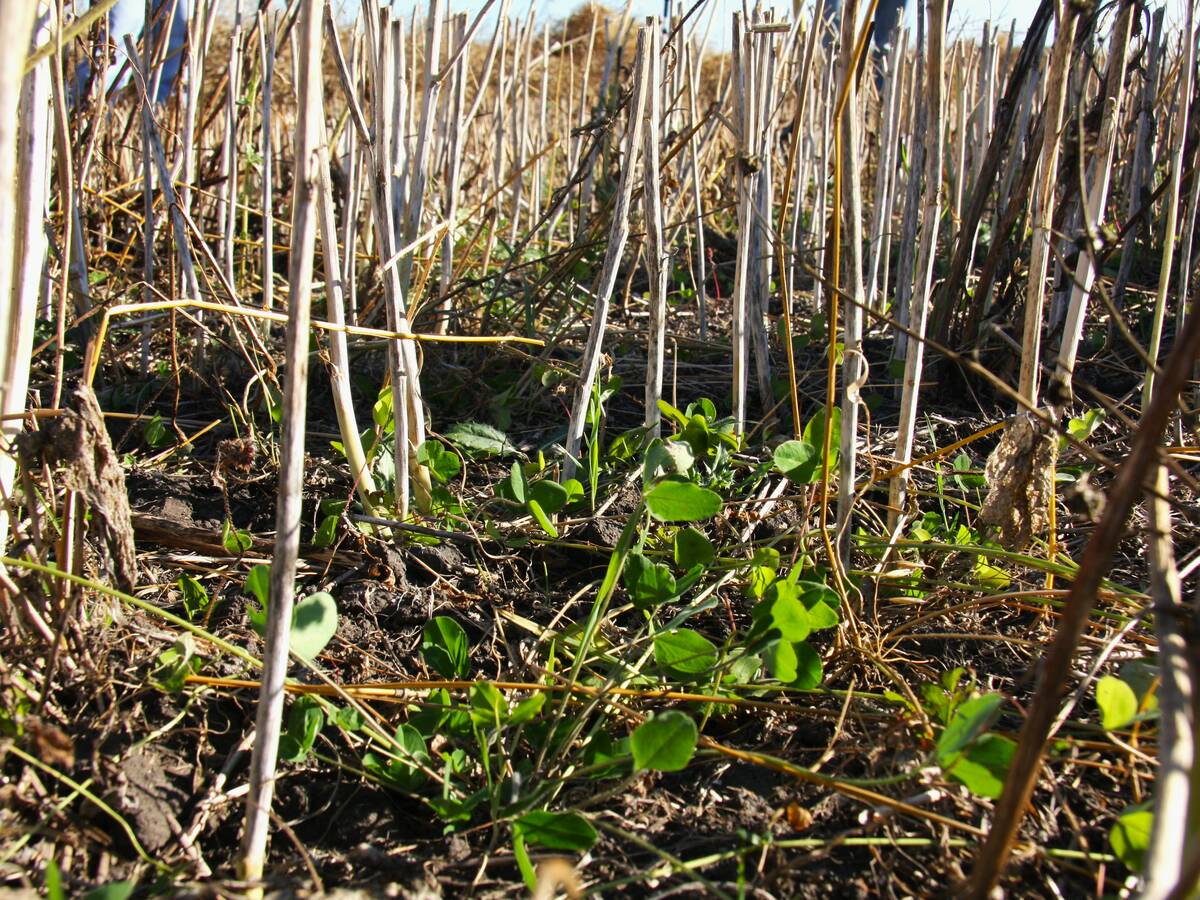Sustainable practices such as reduced tillage and banding fertilizer with the seed are commonplace in Western Canada and have been around for decades.
However, the Canadian grain and oilseed trade could potentially lose sales opportunities to American competitors because the United States is moving faster on sustainable ag programs, says an Agrium official.
“There is a risk that we’re not necessarily set up to meet that need, for those buyers of products that are looking for sustainable sourcing,” said Michelle Nutting, manager of agricultural sustainability with Agrium, which has its head office in Calgary.
Read Also

Saskatchewan project sees intercrop, cover crop benefit
An Indigenous-led Living Lab has been researching regenerative techniques is encouraging producers to consider incorporating intercrops and cover crops with their rotations.
“We need to get in front of that.”
Nutting is a board member of Field to Market, an alliance of more than 135 companies and groups in the U.S., including grower organizations, large corporations like PepsiCo and Mars, universities and conservation groups such as the World Wildlife Fund.
Field to Market is a collective effort to define, measure and advance the sustainability of food production for soybeans, corn, cotton, wheat and other commodities. Members of the alliance have developed metrics for crop production around factors such as energy use, greenhouse gas emissions and soil conservation with a platform called Fieldprint.
Using Fieldprint, growers can adopt new practices and see how the changes alter the environmental footprint of a particular field.
Unilever, which has annual revenues of $76 billion, is part of Field to Market because it has definitive goals around sustainable food.
“We are committed to sourcing 100 percent of our agricultural raw materials sustainably,” Unilever said on its website.
The company is not alone.
“Just about every large food producer … like Nestle, or retailers like Walmart and Loblaws, they’re all going towards some model (where) they just don’t want to buy a commodity on weight and protein,” Paul Thoroughgood, Soil Conservation Council of Canada director, said earlier this year.
“(They) want to know something about the consequences of its production.”
Nutting, who spoke at the Manitoba Agronomists Conference held mid-December in Winnipeg, said Field to Market is moving forward to meet those corporate expectations.
“They (food companies) are being judged by the conservation groups and they’re being judged by the investment community, in terms of the sustainability of their supply chain.”
Field to Market has 45 active projects in 22 states, representing 2.8 million acres and thousands of growers.
The alliance plans to enrol many more growers in the sustainability program with the goal of reaching 20 percent of the commodity crop acres in the U.S. by 2020.
Field to Market does have one sizable project in Canada. General Mills has partnered with prairie oat growers and Paterson Grain to create a sustainable supply of oats using the Fieldprint platform.
General Mills has committed to sourcing its 10 priority ingredients, including oats, sustainably by 2020.
Canada does have something similar to Field to Market, called the Canadian Field Print Initiative.
However, Nutting doesn’t know how many crop acres are committed to the program.
And unlike Field to Market, the Canadian initiative doesn’t have an acreage target.
“There isn’t (a goal) because it was really set up with a five year funding horizon, supported by a small number of companies,” Nutting said, adding the Canadian initiative has struggled to attract corporate support.
“What we don’t have here in Canada, right now, is a strong membership base from food companies. We’re not the head office for a lot of food companies.”
As well, Canada exports most of its grain and oilseed production. In the U.S., most grains remain in the country and are turned into food within the U.S, so American farmers have a more direct relationship with companies that are asking for sustainable production.
That might explain why Canada is lagging behind in sustainable agriculture programs.
“I would say that may be true. That the U.S. is ahead of Canada in these efforts,” Nutting said.
“But we have to look at who buys our grain and what are the needs of those buyers.”
Canada may export a higher percentage of its grain but that doesn’t mean that importers are indifferent about sustainability.
The Canadian Roundtable for Sustainable Crops, a group with a mission of advancing sustainable production, says on its website that buyers do care.
“Sustainability will have an effect on the trade policy of many food importing countries,” the website states. “Consideration for how food production affects the well-being of the people and environment where it was grown will begin to impact what can and cannot be imported into a country.”















